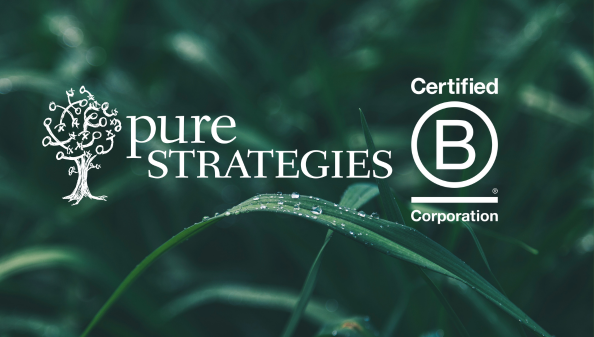GUEST BLOG: Written by Heather Clancy, originally published by the Trellis Group
Radio Flyer says it has put more than 1 billion “wheels” on the road. Increasingly, its toys — including the iconic little red wagon — are becoming more sustainable.
The 106-year-old company has systematically eliminated almost all polyvinyl chloride (PVC) across its $150 million (sales) product portfolio, which also includes scooters, tricycles, electric bikes for adults and toy quad runners sold in collaboration with electric vehicle company Tesla. Each year it sells “thousands” of a beach wagon made with recycled plastic and other reclaimed materials.
Robert Pasin, Radio Flyer’s chief executive and grandson of founder Antonio Pasin, said the company reached these milestones by embedding environmental sustainability metrics in its product development and design processes.
A shift in thinking is imperative for long-term survival, he said. “The thing I would say to other CEOs when I talk to them is that whether you like it or not, [sustainability] is where consumers are headed, and a lot of them are there,” said Pasin, whose official title is chief wagon officer. “They want to know these things, and they’re going to demand that they know where the products are from, how it’s made. That’s just the trend.”
About 60 percent of consumers surveyed in 2022 ranked toys, alongside food and clothing, as the category where they expect increased corporate action regarding sustainability — mainly in the form of choosing natural materials such as wood instead of plastic. Meanwhile, the industry uses roughly 40 tons of plastic for every $1 million in revenue, making it the most plastic-intensive consumer sector in the world, according to data from the U.N. Environment Programme.
Radio Flyer stands out for — and offers lessons in — how to incorporate environmental considerations in all stages of product development.
Create new habits for everyone at the company
Sustainability is front and center at Radio Flyer headquarters in Chicago, where the company installed geothermal heating and cooling to cut natural gas consumption in half. Rooftop solar panels generate more than 60 percent of the energy needed to run the operations there.
But the clearest opportunities for reductions lie in material choices and product design changes.
More than 97 percent of Radio Flyer’s greenhouse gas emissions come during production. The company’s science-based targets are to reduce absolute Scope 1 and Scope 2 emissions 33 percent by 2030 from its 2017 figures; it aims to cut Scope 3 emissions by 28 percent per ton of product during the same timeframe.
“Everybody in the company has goals for the year, and everybody who touches products has goals around sustainability, making our products more sustainable,” Pasin said. “That said, I think habits are even more important than goals. Habits of reviewing every product, every material in every product and saying, ‘What can we replace it with?’”
Start at the product design phase
One important tool for getting designers and engineers to think differently is a scorecard developed with consulting firm Pure Strategies and made available as an operational dashboard, said Eric Selner, executive vice president of product development, sales and operations at Radio Flyer. The company baked life-cycle reviews into design and development to normalize the idea that environmental considerations — materials, water usage, manufacturing processes and energy — should be core to all decisions. “You need to make it easy for the engineers to do the work to ladder up to these goals,” he said.
Material reviews start at the concept phase when factors such as a toy’s size and what will be used to make it are still malleable. Carbon footprint estimates are generated for each alternative, so teams can study the implications of substitutions in real time, Selner said. Radio Flyer has been part of the Chemical Footprint Project since 2016, which it consults to understand the health impacts of materials alongside carbon footprints.
“You can see how the product you are designing compares to other products we are making,” Selner said, referring to Radio Flyer’s tool. “You can see the category average. You can see your product, your product with substitutions. Then, most important, you can see where we all need our products to be to meet our science-based targets.”
Radio Flyer’s ultimate goal is to cut the carbon dioxide emissions equivalent intensity of products to an average of 4.3 kilograms or less, according to its sustainability roadmap. The company doesn’t disclose the current average, but it does offer several illustrations of where its design approach has made an impact.
Consider materials, product size and manufacturing
One example is a decision to replace plastic with fabric in the body of the 3-in-1 EZ Fold Wagon, cutting the weight by 7 pounds and reducing the emissions by 24 percent. The tool also guided a redesign of the Big Flyer Sport tricycle, making it 2.2 pounds lighter and identifying a local manufacturing source to decrease transportation emissions. And it helped identify materials substitutions for the Radio Flyer Ride-On, where it has cut the carbon footprint in half. “One fewer pound of everything is better,” Selner said.
Other sustainable product tips
Take advantage of perks offered by customers. Radio Flyer reports its emissions to Walmart through the retailer’s Project Gigaton initiative and has been recognized as a Giga-Guru, boosting its credibility with consumers and helping it identify new product categories such e-bikes, which it entered during the pandemic.
Beware bioplastics, at least for now. Current options can be expensive and brittle, which can be a challenge for products meant to be durable and long-lasting. To that point, Radio Flyer ships “thousands” of replacement parts to help customers fix products annually, including many long out of warranty.
Use contract negotiations to inspire suppliers to change. The company’s awards and pricing include criteria such as whether partners use renewable energy. It’s obviously simpler to do this when the relationship is growing, Selner said.
Consider B Corp certification. Radio Flyer was the first toy company to earn this recognition, which assesses environmental, social and governance practices. Pasin said the process was onerous in the short term but worth it for long-term strategic insights. “I realized we were doing so many things that would qualify us as a B Corp that we could probably get it without changing a lot, which felt really good,” he said. “That said, the [self-assessment] gave us a report card of stuff that we needed to improve.”
This article originally appeared in GreenBiz on November 27, 2023.


